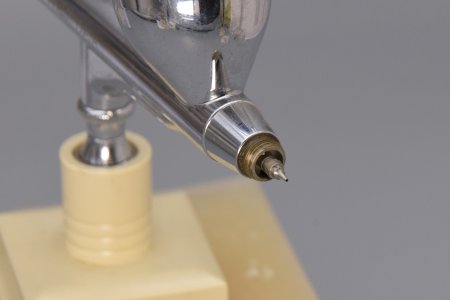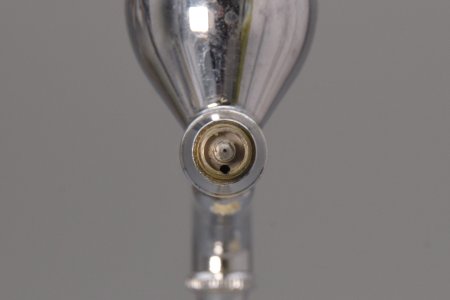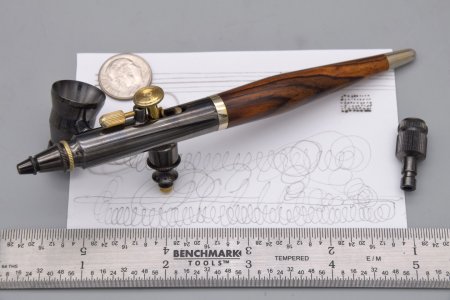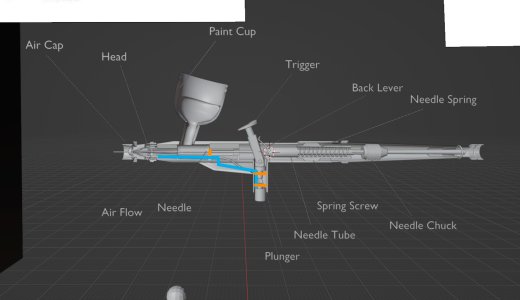It looks like i have more airflow but maybe i'm dreaming lmao i just hope i will not get paint in the air flow now x)Put the brush back together without the ring and see if it works
You are using an out of date browser. It may not display this or other websites correctly.
You should upgrade or use an alternative browser.
You should upgrade or use an alternative browser.
I've bought an airbrush and did a mistake immediatly
- Thread starter benstofly
- Start date
You shouldn't, they are separated by the nozzle and feeder tube.It looks like i have more airflow but maybe i'm dreaming lmao i just hope i will not get paint in the air flow now x)
yes thank you i believe you but i wish i find an example of this piece somewhere just to modelize it correctly but i begin to understand how this piece is made thank youThe only thing down in there is a single hole under the nozzle tube, which is the air passage back to the air valve...
DaveG
Airbush Analyst
give me 20 minutes - I'll go set up a photo...yes thank you i believe you but i wish i find an example of this piece somewhere just to modelize it correctly but i begin to understand how this piece is made thank you!
View attachment 86706View attachment 86707what a shot thank you very much !! Do you know how is it on the other side ?
that's insane awesome work and design !!I made this one from scratch in real life 3d- we'll help you get your model correct.
View attachment 86709
silvercell
Double Actioner
It would usually be straight air channel sections on most airbrushes, but for the ones with the particular body shape at the bottom, it would be more of an empty cavity. But for simplicity sake, straight air channels like Dave's diagram would be fine. I've labelled some of the seals for a better depiction of where they are.

The picture is taken from a YouTube channel called "Scale Model Workshop" so you can have a look at his description of how an airbrush works. He does briefly show how the air and paint flows but the rest of the video is more about the physics of how an airbrush works.

The picture is taken from a YouTube channel called "Scale Model Workshop" so you can have a look at his description of how an airbrush works. He does briefly show how the air and paint flows but the rest of the video is more about the physics of how an airbrush works.
https://airbrushforum.org/threads/i...nd-did-a-mistake-immediatly.25210/post-385916It would usually be straight air channel sections on most airbrushes, but for the ones with the particular body shape at the bottom, it would be more of an empty cavity. But for simplicity sake, straight air channels like Dave's diagram would be fine. I've labelled some of the seals for a better depiction of where they are.
View attachment 86780
The picture is taken from a YouTube channel called "Scale Model Workshop" so you can have a look at his description of how an airbrush works. He does briefly show how the air and paint flows but the rest of the video is more about the physics of how an airbrush works.
silvercell
Double Actioner
I forgot to mention the rubber o-ring I marked in the left of the picture won't exist in the airbrush that you have. So you can ignore that o-ring in your model.

I'm aware. Just marked the o-ring locations so it would be easier to see, and linked the video that might help.
Similar threads
- Replies
- 13
- Views
- 183
- Replies
- 5
- Views
- 283
- Replies
- 21
- Views
- 326






